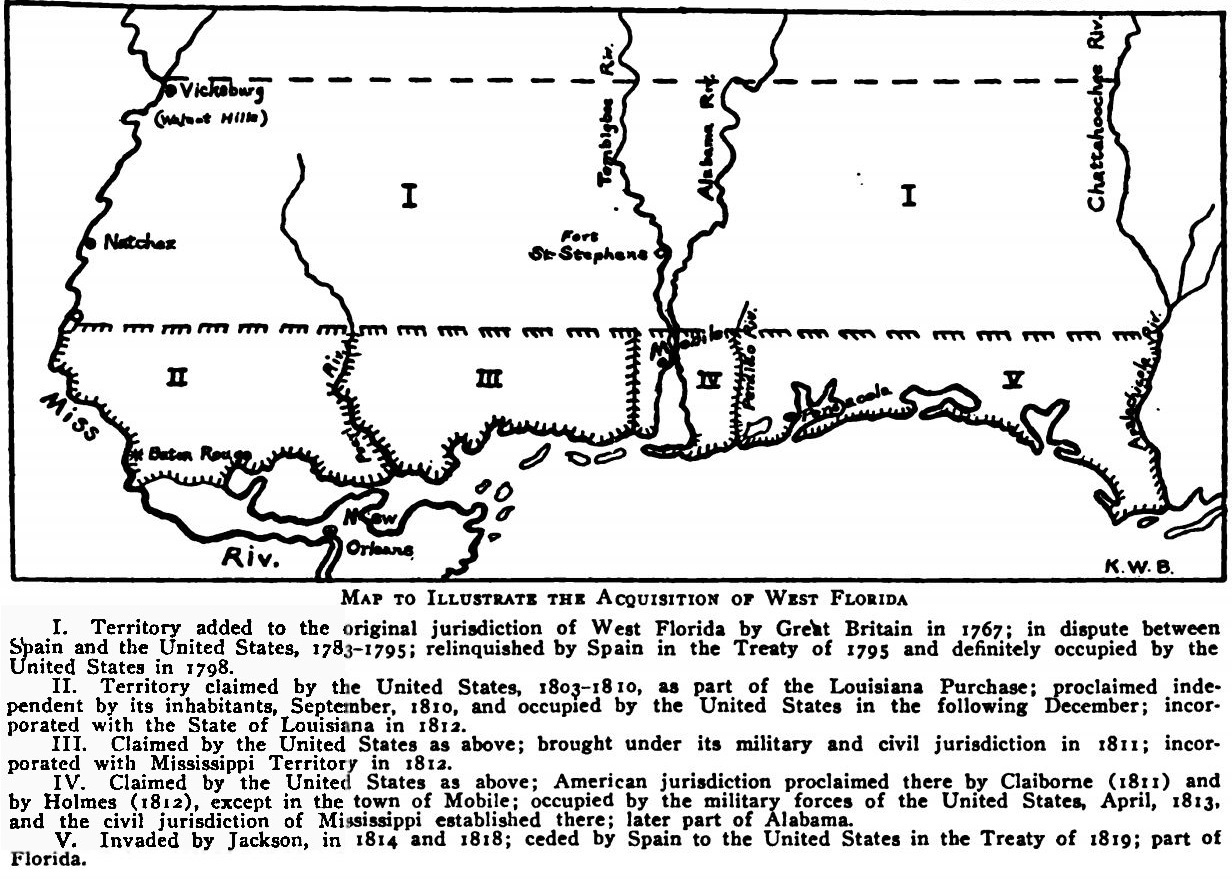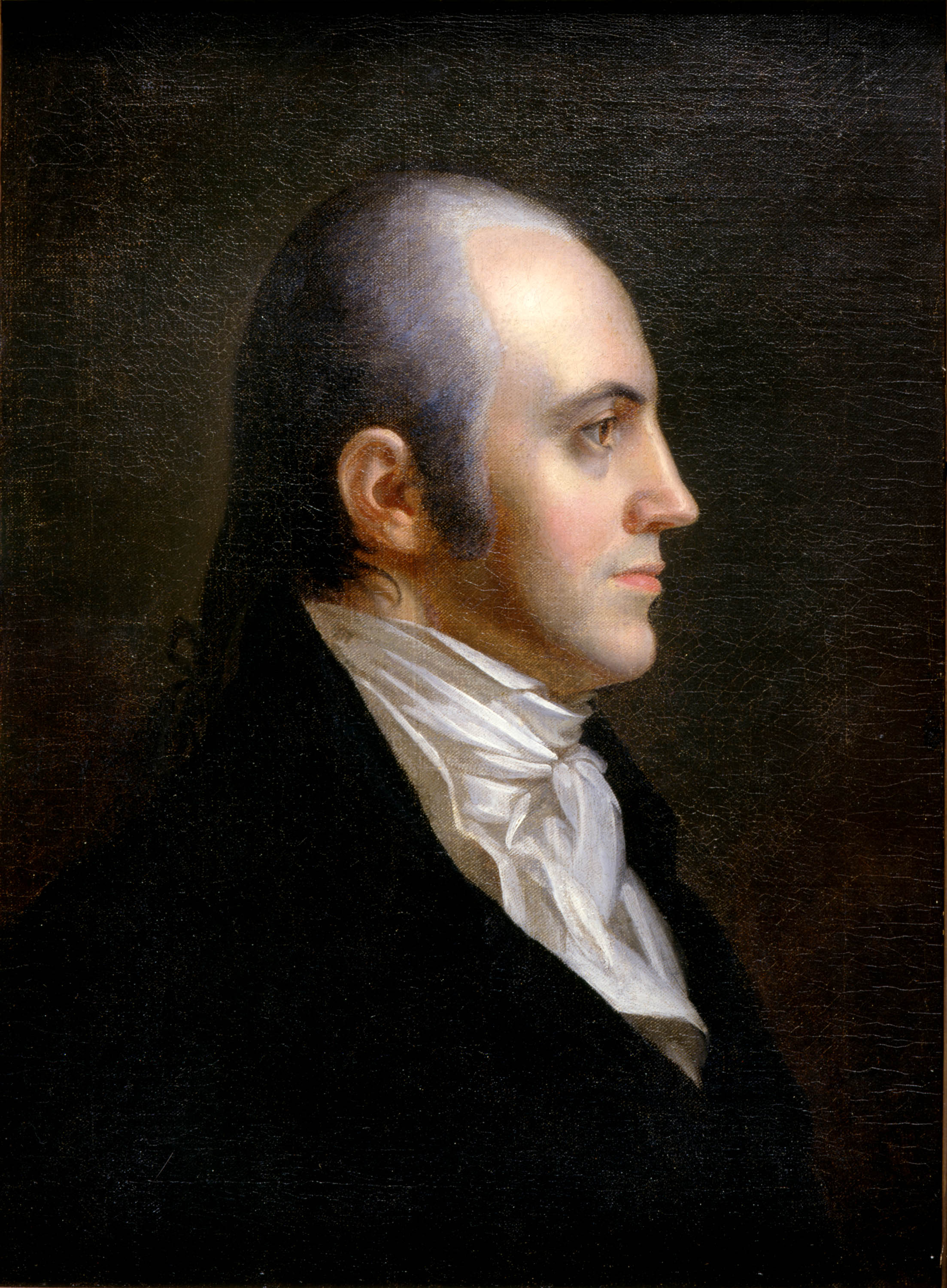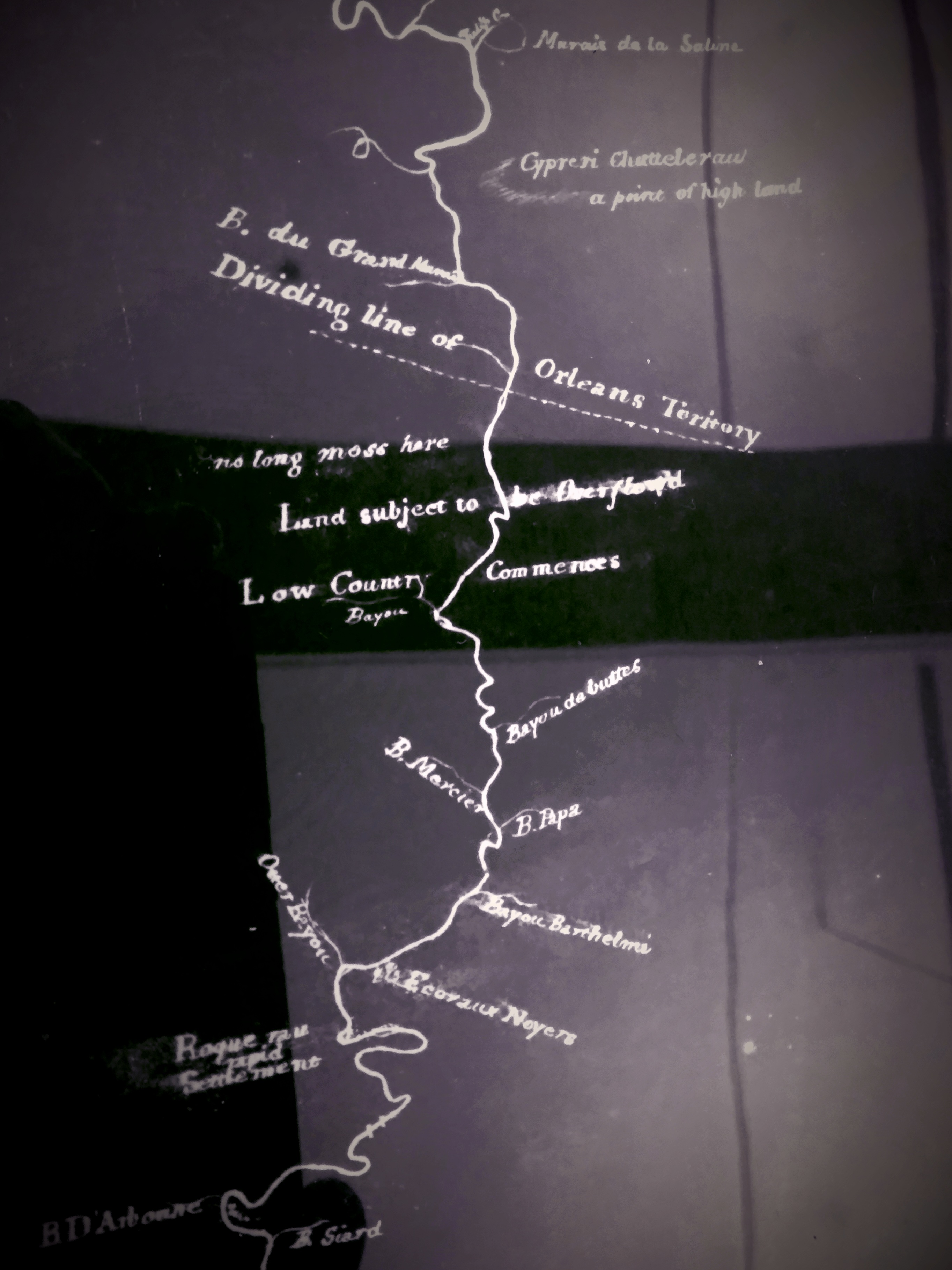|
Clarksville, Mississippi
Clarksville is a ghost town in Wilkinson County, Mississippi, United States. Located directly on the Mississippi River approximately south of Fort Adams, Clarksville was one of the earliest non-Native settlements in Mississippi, and was considered a place of great promise. Clark Creek joined the Mississippi River at Clarksville, and the settlement was located on the south bank of the creek. Approximately south of Clarksville is the historically-significant 31st parallel north, which now forms the border between Mississippi and Louisiana, and approximately south of Clarksville is the current location of the Louisiana State Penitentiary. History The namesake was a Philadelphia furniture, china, and leather merchant whose father-in-law, Adam Hoops, started him in business in 1760. During the French and Indian War the subject was a lieutenant in Major James Burd's company at Fort Augusta in 1756. In 1768, Daniel J. Clark, Sr., Irishman, merchant and former captain of a Pennsylva ... [...More Info...] [...Related Items...] OR: [Wikipedia] [Google] [Baidu] |
Ghost Town
Ghost Town(s) or Ghosttown may refer to: * Ghost town, a town that has been abandoned Film and television * Ghost Town (1936 film), ''Ghost Town'' (1936 film), an American Western film by Harry L. Fraser * Ghost Town (1956 film), ''Ghost Town'' (1956 film), an American Western film by Allen H. Miner * Ghost Town (1988 film), ''Ghost Town'' (1988 film), an American horror film by Richard McCarthy (as Richard Governor) * Ghost Town (2008 film), ''Ghost Town'' (2008 film), an American fantasy comedy film by David Koepp * ''Ghost Town'', a 2008 TV film featuring Billy Drago * ''Derek Acorah's Ghost Towns'', a 2005–2006 British paranormal reality television series * Ghost Town (CSI: Crime Scene Investigation), "Ghost Town" (''CSI: Crime Scene Investigation''), a 2009 TV episode Literature * Ghost Town (Lucky Luke), ''Ghost Town'' (''Lucky Luke'') or ''La Ville fantôme'', a 1965 ''Lucky Luke'' comic *''Ghost Town'', a Beacon Street Girls novel by Annie Bryant *''Ghost Town'', a 199 ... [...More Info...] [...Related Items...] OR: [Wikipedia] [Google] [Baidu] |
West Florida
West Florida ( es, Florida Occidental) was a region on the northern coast of the Gulf of Mexico that underwent several boundary and sovereignty changes during its history. As its name suggests, it was formed out of the western part of former Spanish Florida (East Florida formed the eastern part, with the Apalachicola River as the border), along with lands taken from French Louisiana; Pensacola became West Florida's capital. The colony included about two thirds of what is now the Florida Panhandle, as well as parts of the modern U.S. states of Louisiana, Mississippi, and Alabama. Great Britain established West and East Florida in 1763 out of land acquired from France and Spain after the Seven Years' War. As the newly acquired territory was too large to govern from one administrative center, the British divided it into two new colonies separated by the Apalachicola River. British West Florida included the part of formerly Spanish Florida which lay west of the Apalachicola, as wel ... [...More Info...] [...Related Items...] OR: [Wikipedia] [Google] [Baidu] |
Former Populated Places In Wilkinson County, Mississippi
A former is an object, such as a template, gauge or cutting die, which is used to form something such as a boat's hull. Typically, a former gives shape to a structure that may have complex curvature. A former may become an integral part of the finished structure, as in an aircraft fuselage, or it may be removable, being using in the construction process and then discarded or re-used. Aircraft formers Formers are used in the construction of aircraft fuselage, of which a typical fuselage has a series from the nose to the empennage, typically perpendicular to the longitudinal axis of the aircraft. The primary purpose of formers is to establish the shape of the fuselage and reduce the column length of stringers to prevent instability. Formers are typically attached to longerons, which support the skin of the aircraft. The "former-and-longeron" technique (also called stations and stringers) was adopted from boat construction, and was typical of light aircraft built until the ad ... [...More Info...] [...Related Items...] OR: [Wikipedia] [Google] [Baidu] |
Mississippi Territory
The Territory of Mississippi was an organized incorporated territory of the United States that existed from April 7, 1798, until December 10, 1817, when the western half of the territory was admitted to the Union as the State of Mississippi. The eastern half was redesignated as the Alabama Territory until it was admitted to the Union as the State of Alabama on December 14, 1819. The Chattahoochee River played a significant role in the definition of the territory's borders. The population rose in the early 1800s from settlement, with cotton being an important cash crop. History The United States and Spain disputed these lands east of the Mississippi River until Spain relinquished its claim with the Treaty of Madrid, initially signed in 1795 by the two countries' representatives. The Mississippi Territory was organized in 1798 from these lands, in an area extending from 31° N latitude to 32°28' North — or approximately the southern half of the present states of Alabama and ... [...More Info...] [...Related Items...] OR: [Wikipedia] [Google] [Baidu] |
William C
William is a male given name of Germanic origin.Hanks, Hardcastle and Hodges, ''Oxford Dictionary of First Names'', Oxford University Press, 2nd edition, , p. 276. It became very popular in the English language after the Norman conquest of England in 1066,All Things William"Meaning & Origin of the Name"/ref> and remained so throughout the Middle Ages and into the modern era. It is sometimes abbreviated "Wm." Shortened familiar versions in English include Will, Wills, Willy, Willie, Bill, and Billy. A common Irish form is Liam. Scottish diminutives include Wull, Willie or Wullie (as in Oor Wullie or the play ''Douglas''). Female forms are Willa, Willemina, Wilma and Wilhelmina. Etymology William is related to the given name ''Wilhelm'' (cf. Proto-Germanic ᚹᛁᛚᛃᚨᚺᛖᛚᛗᚨᛉ, ''*Wiljahelmaz'' > German ''Wilhelm'' and Old Norse ᚢᛁᛚᛋᛅᚼᛅᛚᛘᛅᛋ, ''Vilhjálmr''). By regular sound changes, the native, inherited English form of th ... [...More Info...] [...Related Items...] OR: [Wikipedia] [Google] [Baidu] |
Burr Conspiracy
The Burr conspiracy was a plot alleged to have been planned by Aaron Burr in the years during and after his term as Vice President of the United States under US President Thomas Jefferson. According to the accusations against Burr, he attempted to use his international connections and support from a cabal of US planters, politicians, and army officers to establish an independent country in the Southwestern United States and parts of Mexico. Burr's version was that he intended to farm 40,000 acres (160 km2) in the Texas Territory which had been leased to him by the Spanish Crown. In February 1807, Burr was arrested on Jefferson's orders and indicted for treason, despite a lack of firm evidence. While Burr was ultimately acquitted of treason due to the specificity of the US Constitution, the fiasco further destroyed his already faltering political career. Effigies of his likeness were burned throughout the country and the threat of additional charges from individual states forc ... [...More Info...] [...Related Items...] OR: [Wikipedia] [Google] [Baidu] |
United States House Of Representatives
The United States House of Representatives, often referred to as the House of Representatives, the U.S. House, or simply the House, is the Lower house, lower chamber of the United States Congress, with the United States Senate, Senate being the Upper house, upper chamber. Together they comprise the national Bicameralism, bicameral legislature of the United States. The House's composition was established by Article One of the United States Constitution. The House is composed of representatives who, pursuant to the Uniform Congressional District Act, sit in single member List of United States congressional districts, congressional districts allocated to each U.S. state, state on a basis of population as measured by the United States Census, with each district having one representative, provided that each state is entitled to at least one. Since its inception in 1789, all representatives have been directly elected, although universal suffrage did not come to effect until after ... [...More Info...] [...Related Items...] OR: [Wikipedia] [Google] [Baidu] |
Territory Of Orleans
The Territory of Orleans or Orleans Territory was an organized incorporated territory of the United States that existed from October 1, 1804, until April 30, 1812, when it was admitted to the Union as the State of Louisiana. History In 1804, all of the Louisiana Purchase south of the 33rd parallel became the Orleans Territory, and the remainder became the District of Louisiana. (The District of Louisiana was later renamed the Louisiana Territory; and still later, when the Orleans Territory became the State of Louisiana, the Louisiana Territory was renamed the Missouri Territory.) The Organic Act of 1804, passed on March 26 for October 1 implementation, also created the United States District Court for the District of Orleans—the only time Congress has ever provided a territory with a United States district court equal in its authority and jurisdiction to those of the states. Congress also established the Superior Court for the Territory of Orleans whose three judges wer ... [...More Info...] [...Related Items...] OR: [Wikipedia] [Google] [Baidu] |
Daniel Clark (Louisiana)
Daniel Clark (c. 1766 – August 13, 1813) was the first Delegate from the Territory of Orleans to the United States House of Representatives. Born in Sligo, Ireland, he was reportedly educated at Eton College in England. Clark emigrated to the United States in the early 1780s, living with family members in Germantown, Pennsylvania. In Philadelphia, he was elected as a member to the American Philosophical Society. In 1786, at the invitation of his merchant uncle, Daniel J. Clark, Sr. of Clarksville, Mississippi, he moved to New Orleans in Spanish Louisiana. The younger Clark streaked into the New Orleans economy, conducting at least 64 notarized transactions, mostly the sale of slaves, that year - double the number of transactions ever conducted in New Orleans in a single year before then. However, Clark's only appearance in the 1790s as a major businessman was reflected in his numerous formal protests for debts due him in 1793. Although he was a Spanish citizen until the late ... [...More Info...] [...Related Items...] OR: [Wikipedia] [Google] [Baidu] |
Mound Builders
A number of pre-Columbian cultures are collectively termed "Mound Builders". The term does not refer to a specific people or archaeological culture, but refers to the characteristic mound earthworks erected for an extended period of more than 5,000 years. The "Mound Builder" cultures span the period of roughly 3500 Common Era, BCE (the construction of Watson Brake) to the 16th century CE, including the Archaic period in the Americas, Archaic period, Woodland period (Calusa culture, Adena culture, Adena and Hopewell cultures), and Mississippian culture, Mississippian period. Geographically, the cultures were present in the region of the Great Lakes, the Ohio River Valley, and the Mississippi River valley and its tributary waters. The first mound building was an early marker of political and social complexity among the cultures in the Eastern United States. Watson Brake in Louisiana, constructed about 3500 BCE during the Archaic period in the Americas, Middle Archaic period, is cu ... [...More Info...] [...Related Items...] OR: [Wikipedia] [Google] [Baidu] |
Andrew Ellicott
Andrew Ellicott (January 24, 1754 – August 28, 1820) was an American land surveyor who helped map many of the territories west of the Appalachians, surveyed the boundaries of the District of Columbia, continued and completed Pierre (Peter) Charles L'Enfant's work on the plan for Washington, D.C., and served as a teacher in survey methods for Meriwether Lewis. Early life Andrew Ellicott was born in Buckingham Township, Bucks County, Pennsylvania as the first of nine children of Joseph Ellicott (1732–1780) and his wife Judith (née Blaker or Bleaker, 1729–1809). The Quaker family lived in modest conditions; his father was a miller and clockmaker. Young Andrew was educated at the local Quaker school, where Robert Patterson, who later became a professor and vice provost at the University of Pennsylvania in Philadelphia, was his teacher for some time. Andrew was a talented mechanic like many of the family and showed some mathematical talent, too. In 1770, his father, to ... [...More Info...] [...Related Items...] OR: [Wikipedia] [Google] [Baidu] |
James Burd
James Burd (March 10, 1725 – October 5, 1793) was a colonial American soldier in the French and Indian War, during which he played an important role in fortifying the Pennsylvania frontier. Early life Born in Ormiston, near Edinburgh, Scotland, the son of Edward Burd, James Burd came to Philadelphia, Pennsylvania in 1747 or 1748 where he worked as a merchant. On May 14, 1748, he married Sarah Shippen, daughter of former mayor Edward Shippen of the prominent Shippen family of Philadelphia. The couple had eleven children, eight of whom lived to maturity, including Edward Burd. In 1752, he moved his young family to manage his father-in-law's vast land holdings in the area now known as Shippensburg. Seven Years' War In 1756, he settled on a farm in Lancaster County, Pennsylvania, but soon joined the military as an officer at the outbreak of the French and Indian War. He was commissioned a major at Fort Augusta (at present-day Sunbury, Pennsylvania) in 1756, and on December 8, 175 ... [...More Info...] [...Related Items...] OR: [Wikipedia] [Google] [Baidu] |





_NE_4.jpg)
